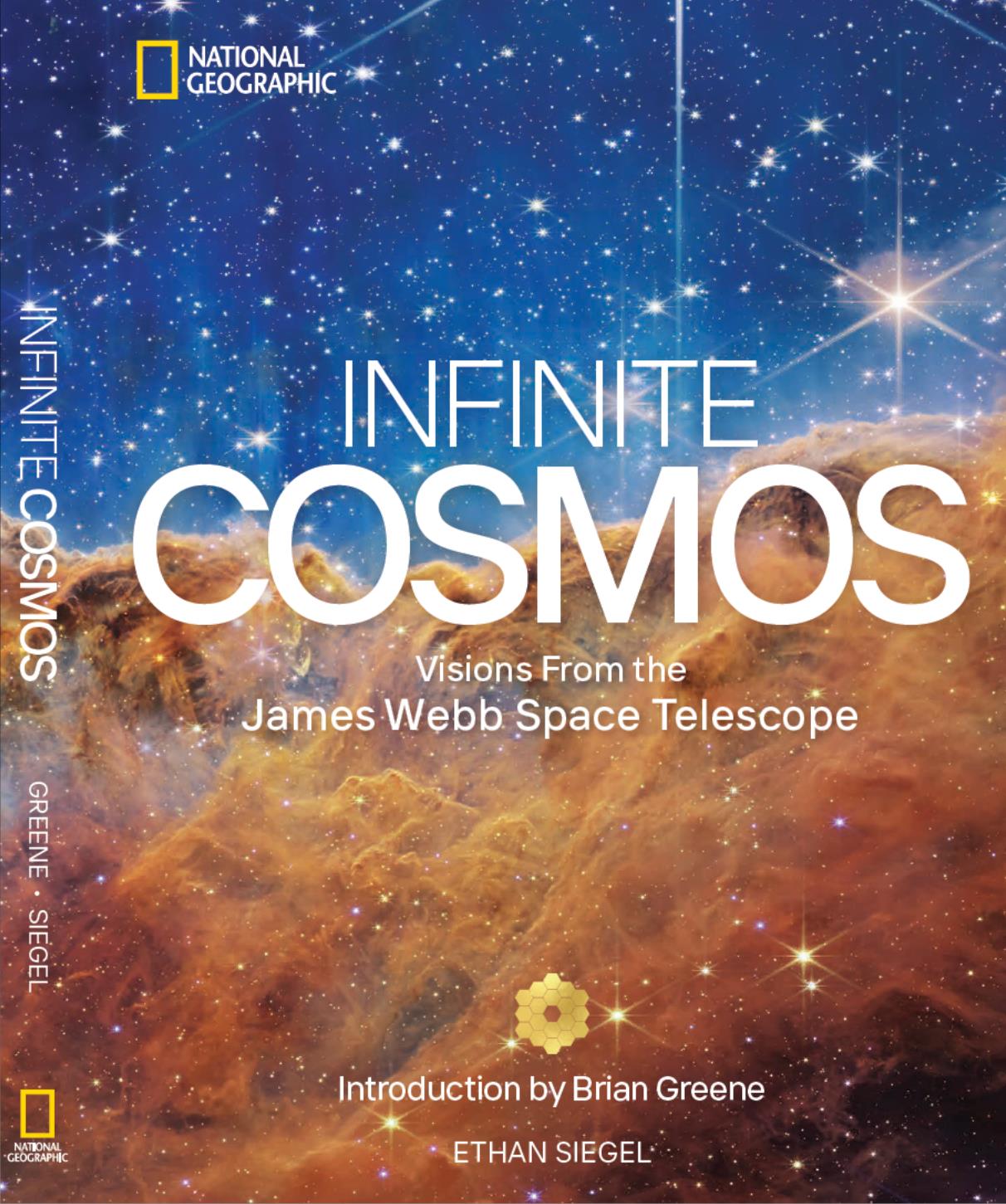The Future Of NASA Astrophysics Depends On Undoing Trump’s FY2021 Budget Request

And how cutting just $1 billion per year in funding from NASA’s budget would be a catastrophe for science.
When you think of the great cosmic beyond and what we know about the Universe, chances are very good that you think about the incredible science we’ve learned from the greatest space-based observatories of all: NASA’s flagship missions. Including NASA’s Hubble, Chandra, and Spitzer, these flagship missions are prioritized by the National Academies once per decade, charting the course for the future of astronomy and astrophysics.
Thomas Zurbuchen, Associate Administrator for the Science Mission Directorate at NASA, doesn’t mince words when he discusses the importance of these flagships:
What we learn from these flagship missions is why we study the Universe. This is civilization-scale science… If we don’t do this, we aren’t NASA.
At a time where understanding science and exploring space is more important than ever, the President’s FY2021 budget request zeroes out funding for all future astrophysics flagship missions among other drastic cuts, similar to cuts proposed (and, thankfully, not enacted) in prior years.
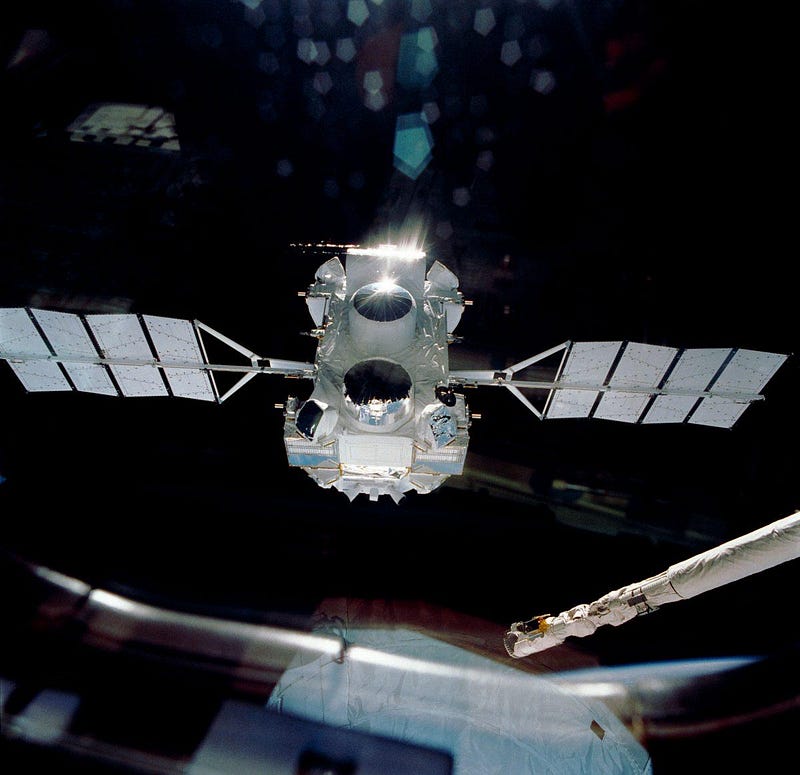
According to NASA’s director of the Astrophysics Division, Dr. Paul Hertz, the case for NASA’s flagship program is overwhelming. From a scientific perspective, the paradigm-shifting science that these missions enable are unparalleled; one can hardly imagine modern astrophysics without the lessons from missions like NASA’s Hubble. It also establishes the United States as the premier country for astrophysics and space science in the world.
“When we build flagships,” Hertz said at the 235th meeting of the American Astronomical society, “the rest of the world wants to partner with us. They can’t do the flagships that we can do.” These successful missions, he emphasized, create support for NASA among all stakeholders that drive its budget and prestige forward. This is echoed in a recent recommendation by the National Academies:
NASA should continue to plan for large strategic missions as a primary component for all science disciplines as part of a balanced program.
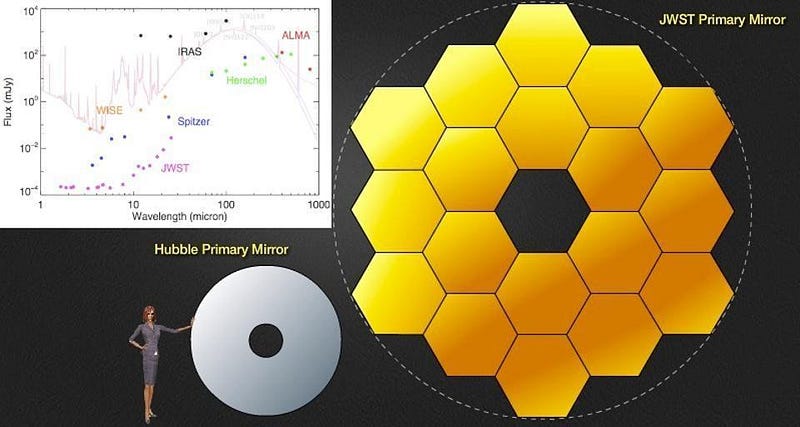
However, for the 2020 fiscal year, the President’s office recommended funding only the next flagship mission for NASA astrophysics — the James Webb Space Telescope — and no others, ever. However, that recommendation was overruled by congress, and the 2020 budget that was passed in December of 2019 appropriates $1.73 billion for NASA’s Astrophysics Division, a $233 million increase from the prior year and a $523 million increase from the President’s proposal.
The good news is that this sets up NASA’s Astrophysics Division to:
- fully fund the James Webb Space Telescope, its next flagship mission, through its 2021 launch,
- fully fund WFIRST, the flagship after James Webb, through Phase C (final design and fabrication),
- while simultaneously allowing ongoing missions (e.g., Hubble), new explorer missions (IXPE, GUSTO, SPHEREx, etc.), and international partnerships (specifically Euclid, Athena, and LISA) to continue.
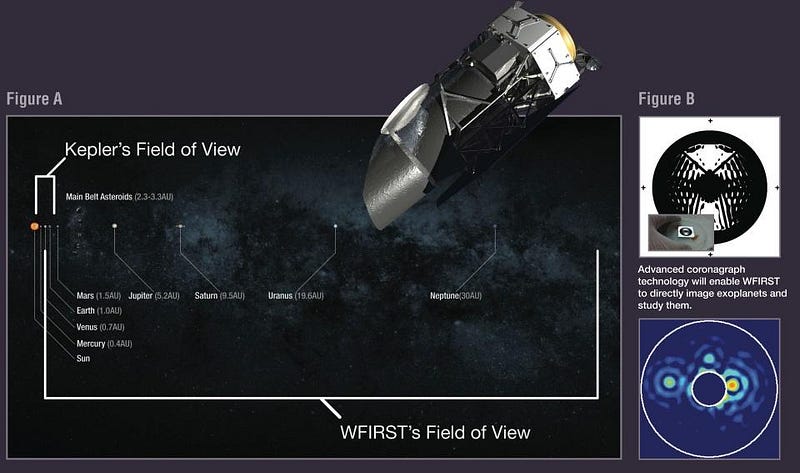
However, this is only a temporary win for NASA in particular and astrophysics in general. During the coming fiscal years, the administration was expected to propose approximately a ~$400 million cut: about a quarter of the astrophysics budget, while the FY2021 request actually proposed even deeper cuts. This type of political instability impedes the future of NASA’s Astrophysics Division enormously, as the flagship program is about all exploring the Universe in novel ways at unprecedented precision. As Hertz explained:
You can think of the astrophysics budget as being divided into approximately two equal parts: the flagships, and all the rest of astrophysics. Hubble was about half [of NASA’s Astrophysics budget at the time], Chandra and Spitzer [were] about half, all the time we’ve been building Webb is about half. That’s a natural place to be at.
The current national budget doesn’t include that [funding]. If we had a stable budget at a historically useful level, we could spend our energy building flagships one after the other as we’d choose. But this budget, as proposed [by the administration], does not include flagships after Webb.
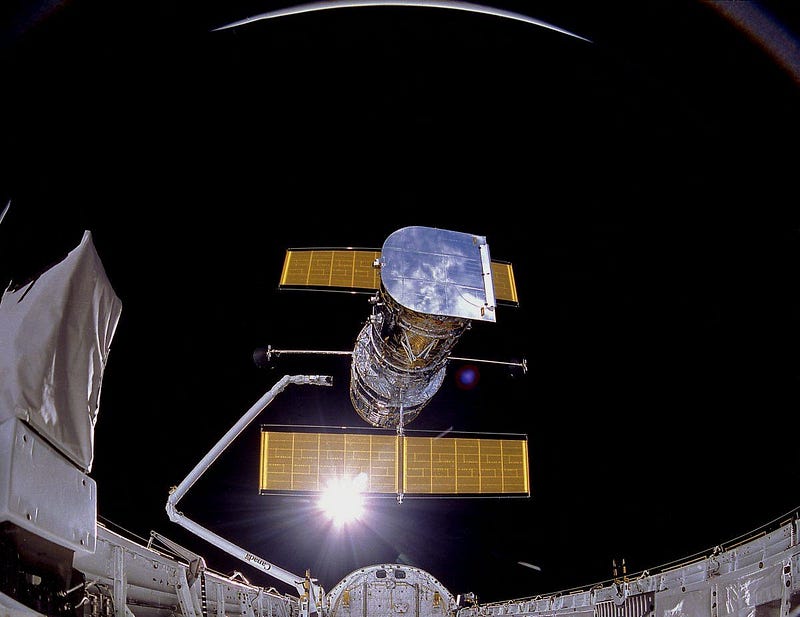
This is really too bad, because the great observatories program of NASA, which took up approximately half of the Astrophysics Division’s budget during its development life cycle, has been arguably the most fruitful and prolific in the entire history of astrophysics. In 2010, during the last decadal review, the NASA administrator didn’t recommend any medium-sized missions and actively discouraged flagships; it was no path towards a balanced portfolio.
For the 2020 decadal, however, NASA has expressed a commitment towards ambitious missions that are well-represented at all levels, from Flagship-class missions down to small-sized missions and everywhere in between. In previous decadal surveys, the most highly recommended flagship mission was eventually built, with:
- the 1970s decadal leading to Hubble,
- 1980s leading to Chandra,
- 1990s leading to Spitzer,
- the 2000s which will lead to Webb,
- and the 2010s which will lead to WFIRST.
The second-ranked choices and lower were either abandoned, left to international partners, or punted to a later decade.
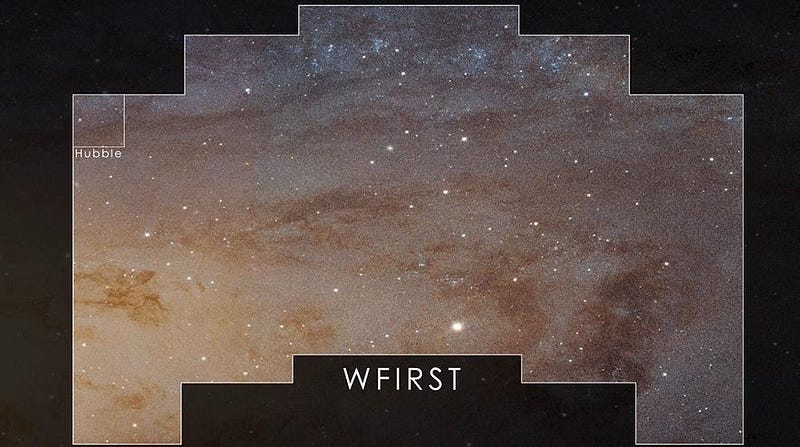
This time, however, Hertz sees a future for up to all four of the finalists for 2020: HabEx (specializing in exoplanet science), Lynx (pushing X-ray astronomy forward), Origins (revolutionizing far-infrared astronomy), and LUVOIR (the most ambitious optical observatory ever proposed).
“I want all of these missions to fly. I think we should do them all; the decadal survey should tell me which one to do first,” Hertz emphasized. “Our great observatories need to be refreshed, and […] we validated the claims that each of these four teams made in their reports. We know how to do our job to help the decadal survey team do their job.”
The next step, assuming funding permits it to be so, is to build these observatories — on-time and on-budget — and pave a path forward for astrophysics to have a bright future. Each of these four missions has its own independent rationale.
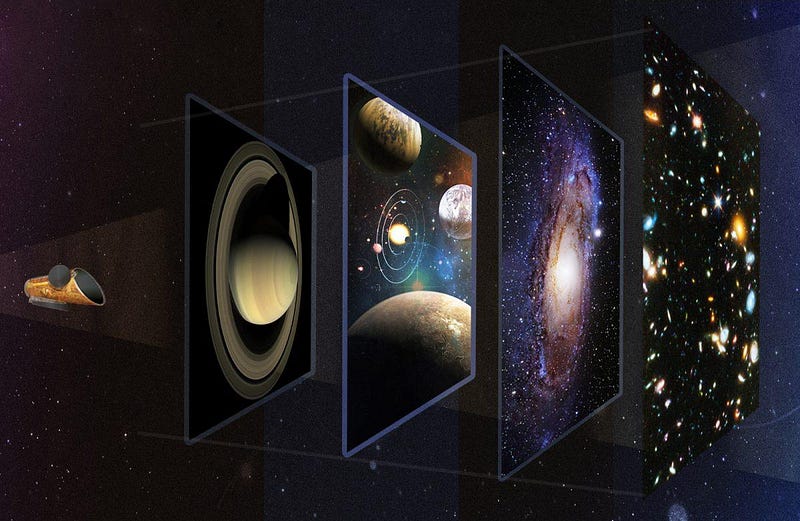
HabEx: The Habitable Exoplanets Observatory has a simple goal: to directly image Earth-like planets around Sun-like stars. Other observatories can get Earth-sized worlds around red dwarfs, Neptune-sized worlds around Sun-like stars, and can manage indirect atmospheric detections with techniques like transit spectroscopy. But HabEx’s advance will be unique. With a 4-meter mirror and either a starshade or an advanced coronagraph, Earth-sized worlds will finally be within the reach of direct imaging.
With its proposed suites of instruments, it should enable us to characterize the atmospheres of planets around other stars, seeking signs of:
- water,
- oxygen,
- ozone,
- methane,
- carbon dioxide,
- and even complex molecules like chlorofluorocarbons,
providing hints or even slam-dunk signatures of an inhabited planet. It will also serve tremendous use as a general astronomical observatory, similar to an ultra-upgraded version of what Hubble is today.
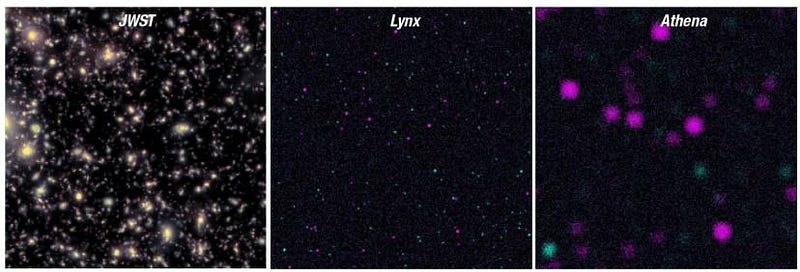
Lynx: In the X-ray portion of the spectrum, humanity hasn’t seen a major upgrade to our observatories since the launch of NASA’s Chandra at the end of the last century. Lynx represents a generational leap, improving the sensitivity to X-rays by a factor of 50-to-100 compared to Chandra, and with 16 times the field-of-view. The imager, the spectrometer, and the calorimeter (which measures energy) all represent tremendous advances over current observatories.
Even the European Space Agency’s Athena, due to launch this decade, has a smaller field of view and greatly reduced sensitivity when held up against Lynx. By comparison, Lynx will have ten times the imaging resolution and better spectroscopic power, particularly for low-energy X-rays, which is crucial for identifying the all-important astronomical signal of ionized oxygen.
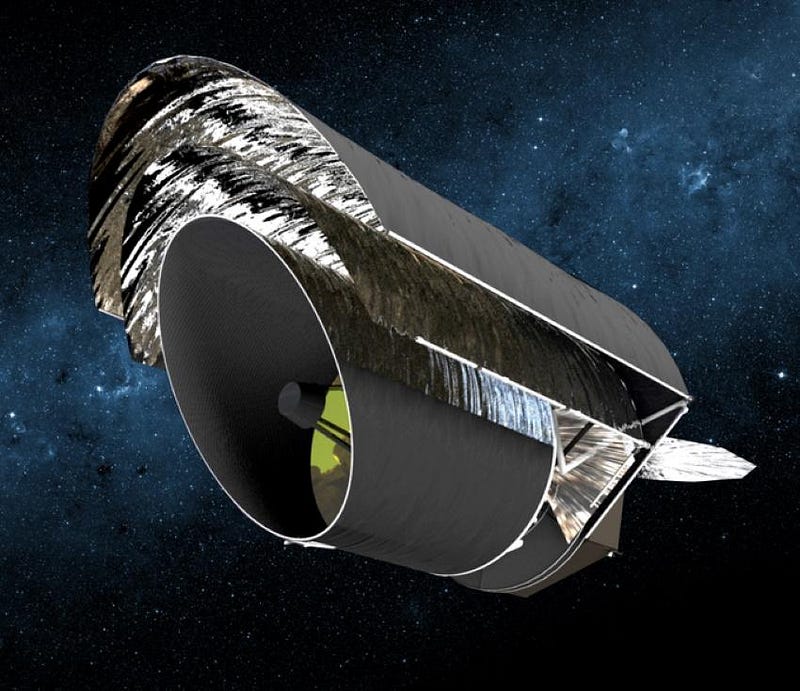
Origins: The Origins Space Telescope is the next-generation replacement for NASA’s recently decommissioned Spitzer Space Telescope, probing the far-infrared portion of the spectrum. The only observatories ever to probe those same wavelengths, NASA’s SOFIA and the ESA’s Herschel, will be beaten in sensitivity by Origins by a factor of around 1,000.
With a 5.9-meter primary mirror and five separate instruments operating at liquid helium temperatures of just 4 K, it will shed light on:
- the growth of black holes and galaxies,
- the formation of planets and solar systems,
- the abundances and growth of heavy elements and dust,
- the locations of life’s ingredients throughout the Universe,
and may even help us probe, for the first time, the signatures of atoms before the first stars ever formed. Most importantly, it will explore a large wavelength range — from 30 to 300 microns in wavelength — that no other mission, existing or proposed, is capable of matching.
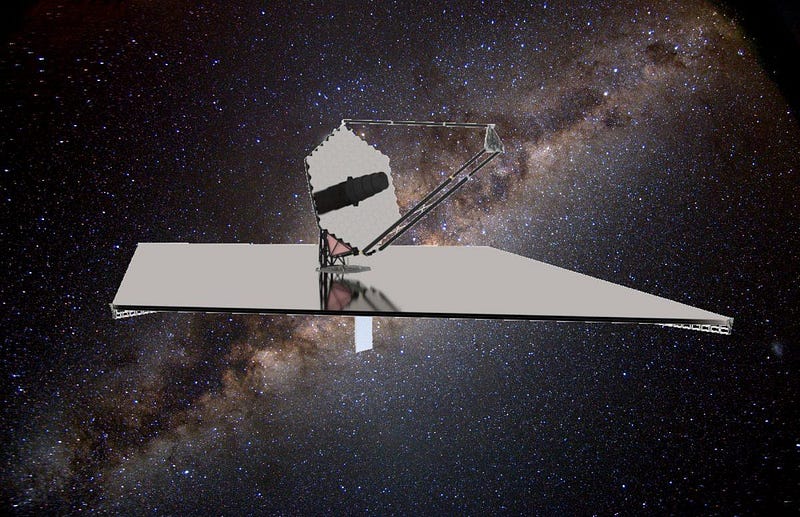
LUVOIR: This is the ultimate dream for a flagship observatory: to basically be a next-generation version of Hubble that’s scaled up to have greater resolution and greater light-gathering power than any space-based astronomical observatory ever. The proposed primary mirror size of 15 meters would give it 40 times Hubble’s light-gathering power and resolutions as small as 0.02″, or one-twenty-thousandth of a degree.
LUVOIR will be an all-purpose observatory like Hubble is, except capable of measuring the entire Universe down to resolutions smaller than 1000 light-years per pixel. Surefire advances include the ability to:
- directly image geysers and volcanoes on Jupiter’s and Saturn’s moons,
- directly imaging any Earth-sized planets around the ~5,000 nearest stars,
- measuring individual stars in galaxies up to 300,000,000 light-years away,
- mapping the gas surrounding every galaxy in the Universe,
- and measuring the dark matter profiles of any galaxy in the Universe.
It’s the most ambitious observatory ever proposed, and could be the 21st century’s greatest observatory of all.
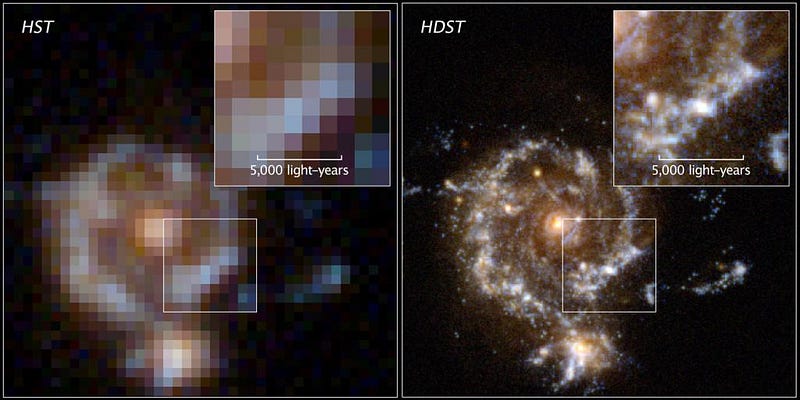
To build all of these observatories and truly end up with a set of flagship missions fit for the challenges of 21st century science will require a continued, stable investment. For approximately $1.8 billion per year, including a 2%-per-year adjustment for inflation, NASA’s Astrophysics Division can spend half of its budget on flagships, while continuing to do everything their ongoing portfolio demands with no interruptions. With this type of investment, we can expect one new flagship mission every 7 years or so, transforming NASA into the science-driving force, replete with cutting-edge, world-class facilities.
As long as there is no guaranteed funding for these endeavors, however, the proverbial rug could be ripped out from under the scientists and engineers who’ve devoted their entire lives to uncovering the Universe’s secrets. In the meantime, a number of dangerous myths continue to perpetuate: myths that Hertz was eager to correct.
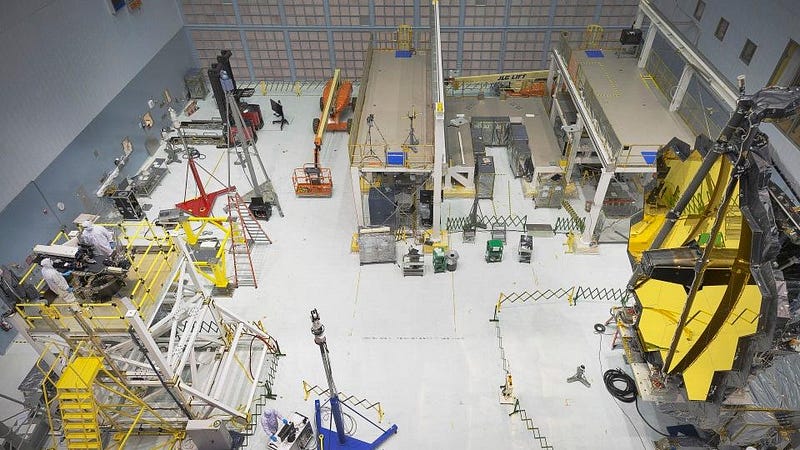
NASA has always spent more than half of its budget on developing large missions; 2019 was the first time the Astrophysics Division’s numbers dropped below that figure. When a flagship mission overruns, it never eats the rest of the science program; it only can delay the next flagship. And flagships aren’t expensive because of mismanagement; they’re expensive because they’re ambitious, first-of-its-kind science.
Before any servicing missions at all, Hubble cost about $3 billion in late-1980s dollars. If it had started in 2007, the same time Webb started, it would have cost $8.3 billion in inflated dollars. Meanwhile, WFIRST is not having any of the problems that plagued Webb, and is coming in on-schedule and on-budget, with 100 times the field-of-view of Hubble and up to 1500 times faster for large surveys at the same depth. The future of scientific exploration is right at our fingertips, if only we’re bold enough to continuously invest in it.
Ethan Siegel is the author of Beyond the Galaxy and Treknology. You can pre-order his third book, currently in development: the Encyclopaedia Cosmologica.




